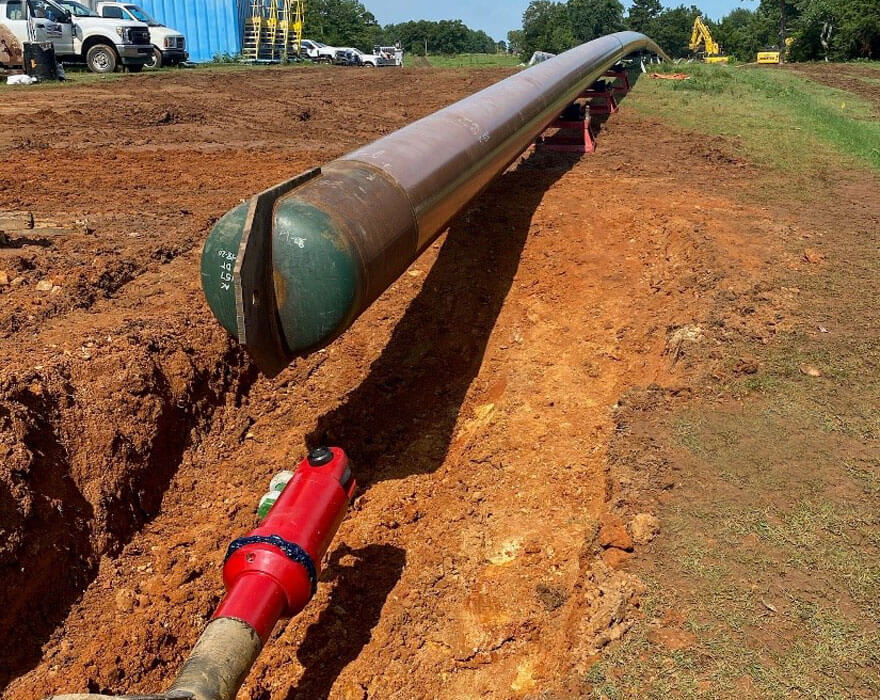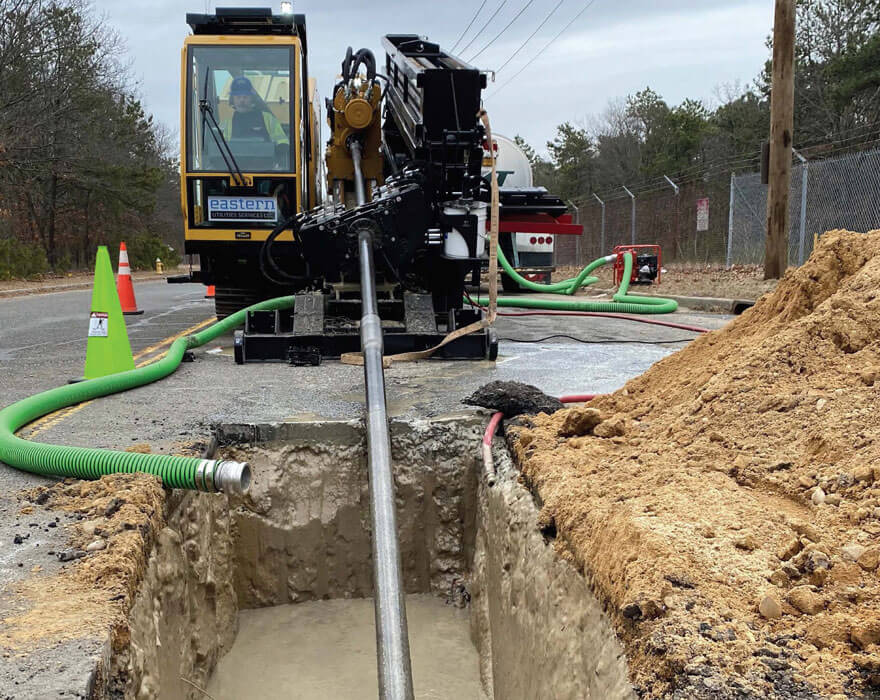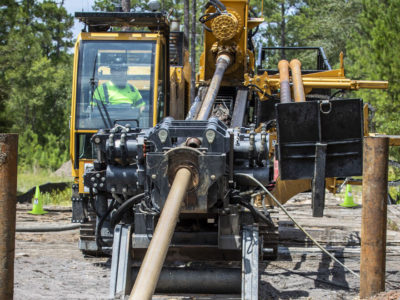What’s the first thing that comes to mind when you think about trenchless installation for pipelines? If you’re like most horizontal directional drilling (HDD) contractors, you naturally think of miles of buried steel casing transporting oil and natural gas. Pipeline installation work for the oil and gas industry has long been a primary market for HDD companies operating maxi rig drills. Unfortunately, this industry has slowed in the last few years, leaving many contractors searching for alternative trenchless installation projects for their fleet of maxi rigs.
The term “pipeline” is often only associated with the oil and gas industry, but there are so many other sources of energy and critical infrastructure supported by networks of steel and plastic pipes buried underground. And, for HDD contractors, many of these emerging markets have big potential for future trenchless installation work.
Water, wastewater, sewage, electrical current and carbon dioxide all can be transported using underground pipelines. And with the passing of the Infrastructure Investment and Jobs Act, as well as utility companies’ electrical undergrounding/hardening initiatives, there is much work to be done by HDD contractors.

Water and sewer pipelines
According to an overview of the Infrastructure Investment and Jobs Act on whitehouse.gov, more than 10 million American households and 400,000 schools and childcare centers lack safe drinking water. As a result, the bill includes $55 billion earmarked to upgrade the nation’s aging water infrastructure and eliminate lead service pipes.
“Many communities most in need of replacing and upgrading their water services have challenges that prevent new lines from being trenched in,” explained Andy Bremner, external sales manager for pipeline at Vermeer. “The need for new water pipelines is often located in busy older neighborhoods where there has been a lot of expansion since water and sewer lines were first buried. To minimize the footprint of these projects, construction plans will most likely require contractors to use trenchless installation methods, including directional drilling.”
Bremner also noted that larger diameter waterlines will require contractors to use 100,000-lb to 500,000-lb (45,359.2-kg to 249,475.8-kg) maxi rigs depending on the diameter of the pipeline, distance and ground conditions.
“On several water expansion projects already being done throughout the country, crews are using a Vermeer D100x140 S3 HDD or a D220x300 S3 HDD to do the work. We also recently introduced the versatile D220x500 S3 HDD that is sized right for working in urban areas installing water and natural gas lines as well as on rural pipeline projects. In many cases, though, HDD contractors can use maxi rigs already in their fleet to perform this type of work,” explained Bremner.

Undergrounding/hardening electrical infrastructure
Another emerging market for trenchless contractors involves installing electrical conduit for transmission and distribution lines. The Infrastructure Investment and Job Act calls for a $65 billion investment to build out the United States’ electrical grid. In many cases, these new electrical lines will be located underground instead of overhead. Trenchless installation methods will be employed for the bulk of the work.
In addition, several of the country’s largest utility companies have announced plans to relocate overhead electric transmission lines underground over the next several years.
“Pacific Gas & Electric in California is one of the largest utility companies that has announced plans to harden its vast network of electrical transmission lines,” said Bremner. “But several other utility companies have already started the work. And in many cases, the location of these lines will require crews to use directional drills regularly in environmentally sensitive areas. To minimize disturbance, a lot of the work will be done in longer bore shots, which will help drive opportunities for 100,000-lb (45,359.2-kg) maxi rigs and bigger.”
Of course, hardening existing infrastructure isn’t the only electrical-related trenchless work out there. Supporting the country’s growing reliance on electricity for charging electric vehicles will require more lines at larger diameters. This means utility companies will have to build out distribution lines that can transmit more electricity to charging stations — similar to work happening in the fiber industry. Utility companies are also adding more redundancy in the electrical grid to prevent outages.
Renewable energy pipeline installations
Beyond hardening existing electrical lines, trenchless installation of new electric transmission pipelines is supporting the growing renewable energy market. In many cases, connecting solar farms and wind turbines to the grid may only require a utility-sized directional drill. Still, large-scale projects will require maxi rigs, too.
“Offshore wind and wave energy is an emerging market that we’re keeping our eye on closely,” said Bremner. “On these types of projects, HDD contractors are installing some pretty sizable HDPE pipelines at long distances. The drill crew usually sets up on shore and can drill several thousand feet under the ocean floor before punching out. These outfalls can be complex, but there is significant opportunity in this sector.”
Carbon capture pipelines
Another potential market for trenchless installation work is in building out pipelines to transport carbon dioxide from industrial plants to underground voids for storage. Several carbon capture pipelines are currently planned across the Midwest. Bremner said there are still some challenges that project owners must address before work begins, but this new type of pipeline could keep HDD crews busy when projects are accepted and approved.
When you hear pipeline, think critical resources
The downturn of the oil and gas pipeline industry impacted HDD contractors running maxi rig drills. But, while that market is down, now is a great time to explore ways to expand into emerging markets. Some of the general contractors involved in oil and gas pipeline construction projects have pivoted to renewable energy wind and solar farms. So, don’t let what’s being transmitted inside a pipeline define the work your crew performs. Instead, consider the opportunities of becoming a provider of critical infrastructure through trenchless methods like HDD.
And if you need help expanding into any of these emerging markets, contact your local Vermeer dealer. They are happy to help.
Vermeer Corporation reserves the right to make changes in engineering, design and specifications; add improvements; or discontinue manufacturing at any time without notice or obligation. Equipment shown is for illustrative purposes only and may display optional accessories or components specific to their global region.
Please contact your local Vermeer dealer for more information on machine specifications. Vermeer and the Vermeer logo are trademarks of Vermeer Manufacturing Company in the U.S. and/or other countries. © 2022 Vermeer Corporation. All Rights Reserved.
